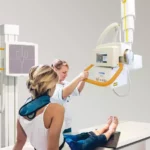Zygomatic and Pterygoid Implants Industry: Overview
Dental implants like zygomatic and pterygoid don’t rely on the jawbone for support like conventional implants require in general. These implants, which are lengthier than standard implants, extend to anchor in the facial bones. Patients with severe bone atrophy can nevertheless benefit from full mouth dental implants by carefully positioning these cutting-edge implants. Only a small number of surgeons are trained and skilled enough to insert these special dental implants, which is widely regarded as a difficult surgery.
Long-term patients with many missing upper teeth typically don’t have enough bone volume or support for traditional dental implants. Removable upper dentures were these people’s only other option for a very long period of time. The upper denture might have some aesthetic and practical advantages, but it won’t stop the bone from deteriorating over time. The denture becomes unfit and painful to wear as bone support is lost. However, this problem can be successfully resolved with zygomatic and pterygoid implants.
Patients who struggle to live a functional life with missing teeth and those who have been told they do not qualify for dental implants have the option of these specialty implants. In addition to genetic disorders and oral injuries, untreated tooth loss can deprive the bone of the stimulation it needs to stay healthy. The bone thins out and becomes too thin to sustain dental implants as it resorbs, both in width and height. Zygomatic and pterygoid-style dental implants can restore a fresh smile without requiring a difficult bone grafting procedure when substantial bone loss in the upper jaw results from tooth loss, trauma, or pathology.
How are Zygomatic and Pterygoid Implants Beneficial for People with Dental Issues?
Thanks to Zygomatic and Pterygoid implants, you can have a fixed dental bridge that resembles natural teeth rather than battle with a painful denture. These implants give you the chance to have functioning and a look that are similar to those of natural tissue, although they are more difficult for the surgeon to implant. You won’t have to worry about feeling uncomfortable or embarrassed when consuming a wide variety of foods. Zygomatic and Pterygoid implants are frequently an alternative for many people who were rejected for “All-on-4” or “Teeth in a Day” therapy because they didn’t match the standards. The maxillary sinuses of these people are frequently swollen.
Some individuals who naturally have big maxillary sinuses could benefit from one of these surgeries. It is crucial to find more insights about the procedure and see if it can help you. People who wear full dentures have noted that, due to bone loss, the fit of their dentures varies over time. Many people who seek a more stable fit for their dentures without enduring many dental implant surgeries to restore all of their lost teeth have found a solution in traditional dental implants.
Dentures can “lock-in” using either ball or bar clasps by putting four to six dental implants per arch. As a result, dentures are kept in position safely. Regrettably, standard bone grafting procedures may not be sufficient for individuals who have previously suffered severe bone loss to restore sufficient bone density to support dental implants and the force of chewing. For better results, Zygoma dental implants are inserted into the deeper bone rather than the resorbed bone. Using a specially made abutment, a dentist can tilt the implants to a more horizontal position and install a dental implant in an upright posture.
What Factors are propelling the Growth of the Zygomatic and Pterygoid Implants Industry?
For patients with insufficient bone in the posterior maxilla due to atrophy, trauma, or tumour removal, zygomatic implants are used in a variety of dental rehabilitation treatments. An increase in the number of people with trauma-related abnormalities in the posterior maxilla has led to a rise in the demand for zygomatic and pterygoid implants. Restoring all oral functions, including chewing and vocalization, is the major goal of employing zygomatic and pterygoid implants.
The development of implant-supported prostheses, along with 3D planning and imaging, is what is driving the market for zygomatic and pterygoid implants forward. Additionally, clinicians prioritize the supervision of prosthetic rehabilitation following implantation in order to enhance results. The market for zygomatic and pterygoid implants is also expected to develop as a result of an ageing population, an increase in dental caries, and a rise in oral injuries from sports-related incidents.
What Challenges are addressed by Zygomatic and Pterygoid Implants?
Only skilled and specialized dental surgeons typically perform zygomatic and pterygoid implant surgeries since they are among the most challenging in the dental sector. These implants give patients a quality of life they could never have before by addressing situations of severe bone loss and poor bone quality. In order to anchor and sustain the implant, these difficult operations call for inserting long implants into the deeper regions of the skull, such as the cheekbones. Therefore, it is crucial that the surgeon performs the treatment with extreme precision in order to guarantee the best outcomes and prevent issues like nerve damage or eye puncture.
How COVID-19 Pandemic has impacted the Zygomatic and Pterygoid Implants Industry?
Many hospitals were closed for non-emergency treatments with the advent of the COVID-19 illness, which the WHO determined to be pandemic. In order to treat Covid 19 and manage the limited resources available for emergency procedures, this was necessary. The sales and market expansion were significantly impacted by this. Following the COVID 19 outbreak and WHO proclamation that the disease is a worldwide pandemic, the entire economy and all human operations were shut down. This has had an impact on the expansion of every aspect of every industry, and the market for zygomatic and pterygoid implants was no exception. Additionally, because the entire healthcare system was devoted to managing COVID 19, other therapies, such as zygomatic and pterygoid implants, were significantly impacted.
What are the Major Trends Emerged in the Zygomatic and Pterygoid Implants Industry?
The market for zygomatic and pterygoid implants was primarily dominated by the significant atrophy related to the maxillary bone. In order to cure maxillofacial bone atrophy and offer advantageous reimbursement policies, new and sophisticated dental implants have been developed. Due to its many advantages, including fewer visits and follow-up appointments and less invasive surgery, dental and orthodontic clinics have emerged as the market segment that generates the highest income for zygomatic and pterygoid implants. In the upcoming years, the dental & orthodontic clinics industry is projected to continue to dominate. Pterygoid and zygomatic implant solutions have recently grown in favor among patients because they provide superior treatment outcomes at lower overall surgery costs, with accelerated recovery and shorter treatment times.
Major Hurdles for the Zygomatic and Pterygoid Implants Industry
The use of techniques from traditional implantology, which are based on a two-dimensional perspective of the issue, on zygomatic implants, whose vision must rigorously be kept in mind in the third angular dimension, is one of the key issues with guided zygomatic implant placement. It would appear plausible to increase accuracy and safety by using a specialized approach for zygomatic implant placement based on a bone-supported surgical template. It is still challenging to perform zygomatic osteotomies with the proper driving angle, and further research involving randomized clinical trials is required to determine predictability of these operations.
The primary concern arising from embed’s presence in humans is the potentially explosive response and unfavorably susceptible/easily affected response that the host’s invulnerable framework may mount against embed/gadget. Since an embed typically lasts for a long time—anywhere from a few months to several years—the occurrence of IAIs and their potential to cause severe depression are frequently real causes for concern.
What is the Success Rate for Zygomatic and Pterygoid Implants Industry?
For graft-free surgeries, zygomatic implants offer an instantaneous loading process. Such a process not only speeds up the operation but also increases patient satisfaction by achieving better treatment results. Over 98 percent success rates have been recorded by numerous hospitals. Patients with substantial bone loss can achieve a higher level of primary stability with zygomatic implants when a permanent prosthesis is inserted right away following surgery. The use of zygomatic and pterygoid implants also enables quick insertion, obviating the requirement for grafting’s required 9–12 month waiting time and repeated procedures. Zygomatic implants provided additional advantages in addition to their immediate functionality, such as less follow-up appointments and clinic visits, less process invasion, and so on. Many orthodontists now choose zygomatic implants over other types of clear implants.
Research is still being done to create methods with high success rates and low risk of problems. High patient satisfaction and long-term stability should be the focus of market participants in zygomatic and pterygoid implants. The market for zygomatic and pterygoid implants is expected to benefit from improvements in zygomatic implant placement brought about by advances in 3D reconstruction. The expansion opportunities have been boosted by advancements in surgical implant guiding. The chances are being boosted by technology advancements and favorable reimbursement policies.
Regional Dynamics Influencing the Zygomatic and Pterygoid Implants Industry
The Asia Pacific market is anticipated to grow at the fastest rate in the future years, making it an emerging market for the worldwide industry. Additionally, in the near future, a moderate growth rate is anticipated for the markets in Europe, the Middle East, and Africa, as well as Latin America. The largest revenue contribution to the worldwide market comes from the European market. Due to the region’s high consumer spending power for high-end goods, there is a considerable demand for zygomatic and pterygoid implants. Due to superior reimbursement policies, stronger purchasing power, and other factors, the Europe market is expected to contribute sizeable revenue shares to the worldwide market.
Who are the Key Players Dominating the Zygomatic and Pterygoid Implants Industry?
The market for zygomatic and pterygoid implants has a low level of market share concentration. Few of the big competitors now control the majority of the market in terms of market share. Straumann Holding AG, Southern Implants, Titaniumfix, Danaher Corporation, Jeil Medical Corporation, Noris Medical, Silimed, and other well-known companies are some of the leading market participants for zygomatic and pterygoid implants.
In partnership with Southern Implants, The Straumann Group unveiled a brand-new zygomatic implant option. The benefits of Straumann’s BLX and BLT implant prosthesis range for fixed overdentures are combined with established implant design features in the new solution.
A high-end dental practice in Singapore called Nuffield Dental Group has opened its tenth clinic with cutting-edge dental technology. At Nuffield, zygomatic implants are an alternate treatment for issues with low bone density in the patient’s upper jaw.
Future Scope for the Zygomatic and Pterygoid Implants Industry
In appropriate circumstances, zygomatic and pterygoid implant insertions constitute an efficient, faster, and less invasive alternative to extensive bone augmentation. The treatment is achievable with successful results even if carried out by inexperienced surgeons, according to the study’s findings in terms of precision and pre-surgical preparation. However, there should be improvements made to the surgery’s simplicity and decrease in invasiveness.
It has been postulated that zygomatic implants could be used to attach a prosthesis on severely resorbed maxillary bone. Recent research’ findings supported the guided method’s superior accuracy over the free hand one. The proposed guided zygomatic surgery appears to be a workable and safe method when compared to the free hand approach, according to the findings of various investigations. To corroborate the findings of the latest investigations, additional study on the efficacy of the complete treatment in vivo on actual patients should be required.
Zygomatic implants are lengthy, robust, and custom-made implants that anchor into the zygomatic bone, which is dense. The zygomatic bone does not resorb, in contrast to natural jaw bone. Implants may be placed on the maxilla’s outer surface or into the maxillary sinus. As a result, using them necessitates less bone grafting and permits quicker loading. In the end, patients can benefit from the convenience of having a set repair when they leave the procedure. However, because wrong placement could seriously harm important structures, their current placement process calls for a significant amount of knowledge and experience.










